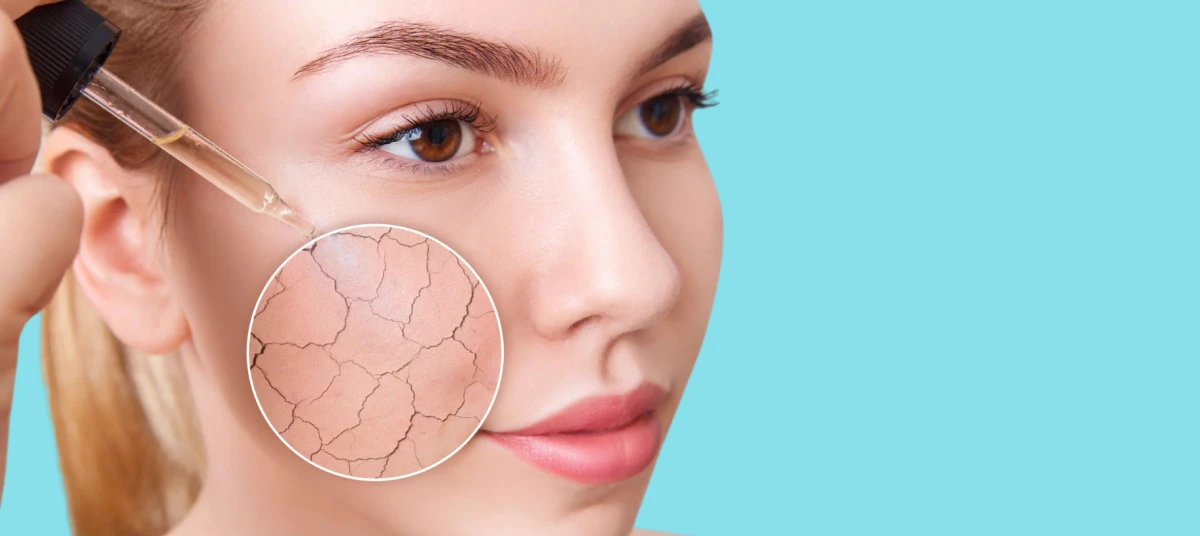Do you believe that the only “comfortable” acid for dry, sensitive skin is hyaluronic acid? Well, we have great news and some interesting introductions for you!

Which acids are best for dry skin?
Many people are convinced that acids and dry skin are a recipe for disaster. For some, even the word “acid” sounds like something irritating. If you share this view, it only means one thing: it’s time for you to get acquainted with the gentlest types of acids.
So, which acids should you choose for dry skin?
Lactic Acid
Lactic acid is a true treasure for those with sensitive and dehydrated skin. It is the mildest of the AHA acids and gently exfoliates while also moisturizing the skin. It’s even used in skincare for psoriasis. We predict that your relationship with it will be very comfortable.
What’s its power?
- Gently exfoliates without causing irritation
- Promotes hydration, making the skin smooth and elastic
- Smoothens fine textures and improves skin texture
- Brightens pigmentation and evens out the skin tone
- Maintains a healthy skin pH balance
How to use lactic acid in skincare?
You can find lactic acid in toners, serums, and peels. Concentrations for home use start from 5%, but only products with 10% lactic acid can provide significant exfoliation of dead skin cells and smoothing of the corneal layer. Lactic acid products can even be used daily, but this depends on your skin’s needs and sensitivity. Apply lactic acid to completely dry, previously cleansed skin, and after 10-15 minutes, follow up with a moisturizing cream (if your skin is very reactive, you can apply the cream immediately).
Important Tip #1: Lactic acid is suitable for sensitive skin, but individual reactions still occur—any discomfort means you need to change the product or reduce its frequency or method of use.
Important Tip #2: While lactic acid is gentle, it still increases the skin’s sensitivity to sunlight, so don’t forget daily sunscreen, even on cloudy days.
Important Tip #3: Before introducing any acid, including lactic acid, ensure your skin barrier is in good condition—this will help avoid irritation and provide comfortable care.
PHA Acids
PHA acids (polyhydroxy acids) are a godsend for dry, sensitive, and irritated skin. They aren’t typically considered exfoliating acids but are better categorized as moisturizing agents. These acids have large molecules that don’t penetrate deeply into the skin, so exfoliation isn’t something to expect from them. The most popular PHA acids are gluconolactone and lactobionic acid.
What’s their power?
- Moisturize the skin, improve texture, and smooth peeling
- Provide antioxidant properties, protecting the skin from free radicals
- Even out skin tone and brighten pigmentation
- Suitable for sensitive skin, including skin with rosacea
- Support the microbiome and promote regeneration
How to use PHA acids in skincare?
PHA acids are often found in toners, serums, night masks, and moisturizing creams. They can be used daily, even on very sensitive skin. Unlike other acids, PHA products can be applied to damp skin. PHA acids don’t cause irritation and even reduce it, so they can be combined with retinoids. They don’t increase photosensitivity, but sunscreen remains an essential part of your routine.
Important Tip #1: PHA acids work more as moisturizing agents than exfoliants, so if you’re looking for strong exfoliation, you might want to choose other acids (like lactic acid).
Important Tip #2: These acids are perfect not only for dry skin but also for combination skin, as they improve texture and hydrate without adding weight.
More about acids and their importance in skincare — read here



1 Comment